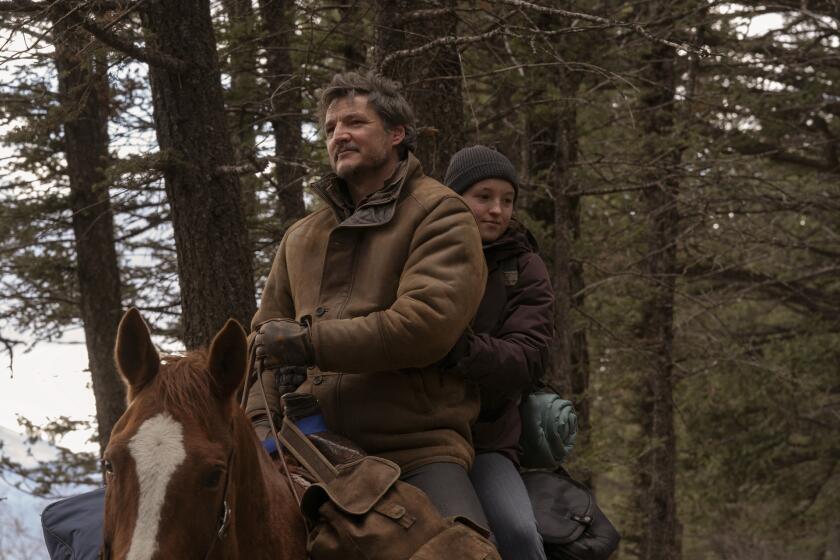Attention to d’ Tale Is the Edge for Disney
- Share via
David Koenig first tackled the world of Disney in “Mouse Tales: A Behind-the-Ears Look at Disneyland,” in 1994. Now, the Aliso Viejo author takes an unauthorized look at the “secrets of Disney animation and theme parks.”
“Mouse Under Glass” ($23.95), published by Bonaventure Press of Irvine, examines why competing movie makers and theme-park operators “have tried--and consistently failed--to match the popularity and quality of Disney’s creations.”
At the heart of Disney’s success is not its vaunted animation, according to Koenig, but the company’s “meticulous” planning and attention to story line.
“Disney will spend a year--sometimes years--planning an animated feature before anything is drawn,” says Koenig, 34. “They’ve got their system worked out, and they’ll take an original story and sort of hammer it into the ‘Disney version’ in meeting after meeting.”
Disney’s animated movie and park competitors, Koenig says, “don’t have that size of a staff and that size of a budget and that amount of patience. They settle for the first or second idea as opposed to Disney. They’ll take it further and say, ‘What if?’ one more time.”
Koenig, editor of a Newport Beach-based trade magazine for home-improvement centers, has been fascinated with Disney films since he was a kid.
“The one that made the strongest impression was ‘Bedknobs and Broomsticks’ in 1971,” he says. He saw the film at the drive-in with his family three times.
Koenig’s research for his book included not only scrutinizing the old films but interviewing about 30 Disney veterans, including animators, songwriters and, most significantly, writers--from veteran Disney story man Joe Grant, who worked on “Snow White and the Seven Dwarfs” in the ‘30s to Tom Sito, head writer on “Pocahontas,” produced in the ‘90s.
Koenig examines the “original tale” that inspired each movie, then he describes how the studio turned it into the Disney version--a complex “sanitizing process,” in which the Disney team begins by finding “the happy moral of the story--or if it doesn’t have one they’ll invent one,” he says.
In Hans Christian Andersen’s fairy tale “The Little Mermaid,” for example, the mermaid falls in love with a prince and drinks the evil sea-witch’s potion to turn her fins into legs. But the prince ends up marrying someone else--an action that will cause the mermaid to turn into sea foam the next morning. If the little mermaid plunges a dagger into the prince’s heart before sunrise, however, his warm blood on her feet will change them back into a tail. She doesn’t go through with it, but her decision earns her a chance to have an immortal soul.
In the Disney version, Koenig says, there is no reference to a dagger, the prince marries the little mermaid, “and they live happily ever after.”
In looking at each film, Koenig also describes plot holes, scenes that wound up on the cutting room floor, “strange reactions” to the films when they were released and the Disney theme-park attractions that were inspired by each film.
He also includes the bloopers.
In “The Aristocats,” for example, the dog Napoleon bites the seat out of the butler’s pants. Thirty seconds later, Koenig writes, “the pants miraculously patch themselves up, because as the butler hangs from the windmill, the dog again bites the seat out of his pants.”
The book is interspersed with a dozen sidebars.
In Hearing Voices, Koenig writes of the story department’s 1946 voice casting suggestions for characters in “Alice in Wonderland.” Among those considered for the Cheshire Cat: Peter Lorre, Edgar Bergen as Charlie McCarthy, Phil Silvers, Claude Rains, Reginald Gardiner and Allyn Joslyn. It was former Laguna Beach resident Sterling Holloway who landed the part.
In another sidebar, the Disney Tragedy Trivia Quiz, readers are asked how many instances of violence or unfavorable behavior are found in “Pinocchio.” Answer: 43, as enumerated in a 1993 issue of Playboy magazine (25 instances of battery, nine acts of property damage, three slang uses of “jackass,” three acts of violence involving animals, two shots of male nudity, and one instance of implied death).
In writing the book, Koenig says, “I was sort of having fun with it as well. I wasn’t trying to impress the reader with how wonderful Disney animators and park designers were--even though that probably comes out when you look at how hard they work on building these rides and making these movies.”
Koenig will sign “Mouse Under Glass” at 1 p.m. Saturday at Waldenbooks in the Brea Mall.
* O.C. Books & Authors
A visit by Medgar Evers’ brother; romance writers gather. E2
More to Read
The biggest entertainment stories
Get our big stories about Hollywood, film, television, music, arts, culture and more right in your inbox as soon as they publish.
You may occasionally receive promotional content from the Los Angeles Times.










